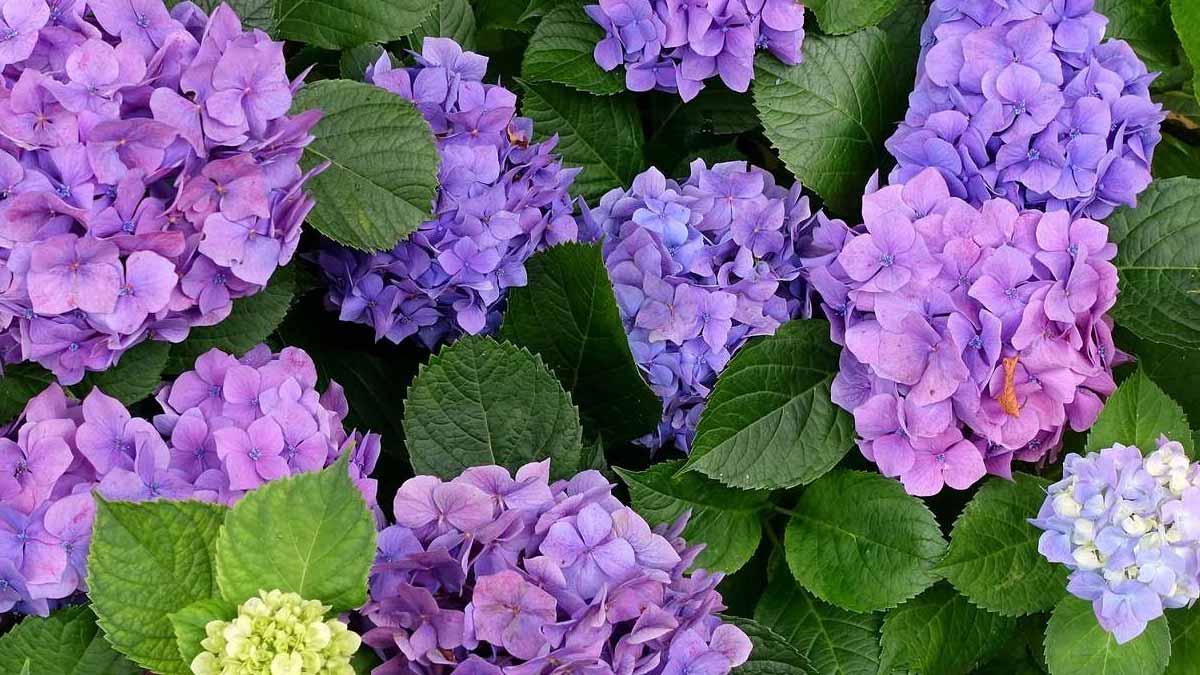A shift is underway in our gardens, and it cuts to the heart of what we plant, water, and hope to see bloom. As summers intensify and air dries out, hydrangeas no longer behave like dependable showpieces. They demand moisture we cannot guarantee, suffer during heat spikes, and falter despite care, so gardeners now question their place. This change feels abrupt, yet it follows clear signs: scorched leaves, wilted heads, and repeated losses after extreme weather. Holding on costs time, money, and patience that resilient plants use better.
Why this cherished shrub now struggles in a harsher climate
These shrubs evolved for steady moisture and cool air, so repeated heat waves push them past their limits. Even generous mulching, deep watering, and afternoon shade fail when nights stay hot and humidity collapses. The plant’s tissues dehydrate, buds abort, and blooms fail. During the 2022 heat events, one nursery reported losing nearly 70% of stock.
Shade should help; instead, arid air drains foliage faster than roots can replace water. Leaves crisp by early June in regions once considered safe. Watering more seems logical, yet it worsens oxygen starvation around roots. The cycle repeats with each hot spell, and the plant faces stress it cannot beat.
Fungal problems follow overwatering, so rescue efforts backfire. Saturated soils encourage rot, while erratic irrigation triggers flower drop. You spend more, the shrub delivers less, and disappointment grows. At some point, the choice becomes clear: stop forcing a species to fit and shift to plants designed for the new normal.
How hydrangeas react to heat, dry air, and erratic watering
Transpiration drives cooling, yet dry winds and high vapor pressure deficits accelerate water loss. Roots cannot keep pace when soils warm and moisture retreats. Mulch helps stabilize temperatures, and shade nets reduce scorch, although neither restores the humid envelope these blooms prefer.
Irrigation systems promise control; reality sets limits. Drippers hydrate soil, not air, so tissues still dehydrate under intense sun. Frequent sips cause shallow rooting, while heavy cycles suffocate roots. Soil compaction from repeated wetting and drying compounds stress, and blooms fade early despite best-laid plans.
Many gardeners trial fixes: wetting agents, anti-transpirants, reflective fabrics. Results vary, costs rise, and gains vanish during prolonged heat. Once nights refuse to cool, morning recovery never comes. A plant built for misty edges of woodlands cannot thrive in sustained aridity, whatever the gadget or timetable suggests.
Practical warning signs, common mistakes, and what actually helps
You notice leaf margins browning, petals bleaching, and stems drooping mid-day even with support. Soil looks moist, yet growth stalls, then buds abort. This isn’t a fertilizer issue; it’s atmospheric stress. Reading the signals early prevents wasted effort and narrows choices toward resilient plantings instead of struggle.
When panic sets in, people overfeed or cut back hard, hoping to “reset.” That invites stress shoots and weak tissues. Even touted “drought-tolerant” forms, including panicle types, stumble under long heat waves and low humidity. Place hydrangeas in such conditions and you trade routine care for triage.
What helps? Right plant, right place, and realistic targets. Improve soil with compost to hold moisture without waterlogging. Add coarse mulch to reduce evaporation. Group plants by water needs, and use shade strategically in late afternoon. These steps work best when the species already tolerates heat, wind, and leaner rainfall.
Data, timelines, and choosing resilient look-alikes instead of hydrangeas
Losses spiked during the 2022 heat waves; according to growers, recovery lagged well into fall as buds failed to set. Designers adjusted quickly. They now specify lavender, ceanothus, and Russian sage for floral volume with minimal irrigation, plus ornamental grasses that sway rather than wilt when rain runs late.
In cooler, wetter belts, the trend still holds because extremes arrive in bursts. Bulbs bridge gaps as rain patterns shift, while Mediterranean shrubs anchor borders through dry spells. Perennials that bloom in late summer deliver color after the hottest stretch. This timing avoids peak stress and keeps maintenance predictable.
“Grow what thrives, not what survives” guides the new palettes, say landscape teams focusing on water-wise schemes. The effect stays lush because texture, movement, and seasonality do the heavy lifting. You regain weekends, reduce bills, and build gardens that ride out weather spikes while still looking generous and alive.
From outdoor borders to indoor blooms : climate-smart swaps that still feel lush
If you love rounded flower heads, try mop-like inflorescences from heat-tolerant alternatives. Coneflowers, salvias, and gaura keep color moving, and they pair well with grasses for contrast. Plant in drifts, repeat shapes, and use staggered heights. The border feels abundant without demanding constant rescue.
For containers, drought-ready pelargoniums and verbena offer steady color on sunny patios. Water deeply, less often, and let the top layer dry between cycles. Indoors, new flowering houseplants extend the mood without weather risk; light, airflow, and consistent routines keep results reliable. You enjoy blooms while the climate rages outside.
Maintenance simplifies with matched species. Seasonal pruning works because plants push growth at the right time. You feed modestly, mulch annually, and top up compost as structure settles. Place hydrangeas only where microclimates grant cool nights and sheltered humidity, then accept limits. Everywhere else, lean into resilient beauty.
Choosing beauty that fits today’s climate, not yesterday’s
Letting go feels personal, yet it frees your garden to succeed. When you stop rescuing hydrangeas, you reclaim water, time, and energy for species built for heat and erratic rain. Microclimates can still host a cherished specimen, but a border that thrives on reality, not nostalgia, will reward you season after season.
